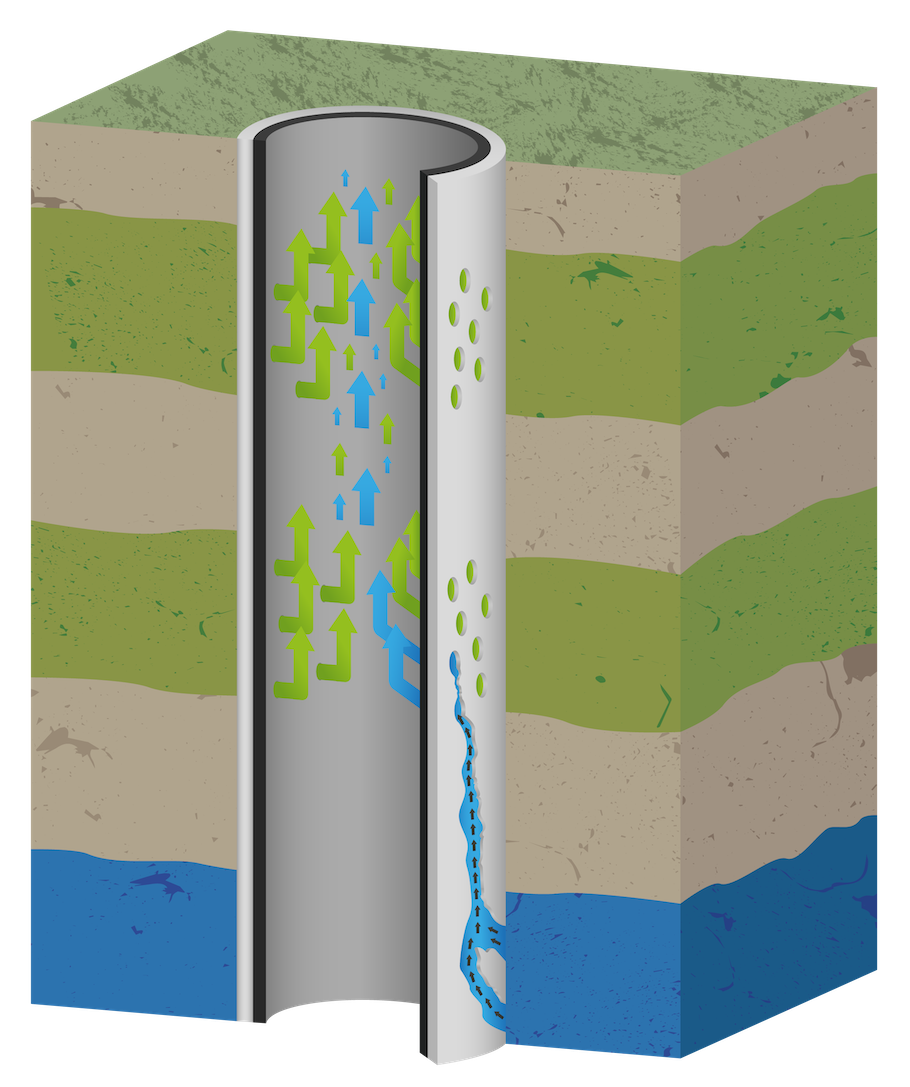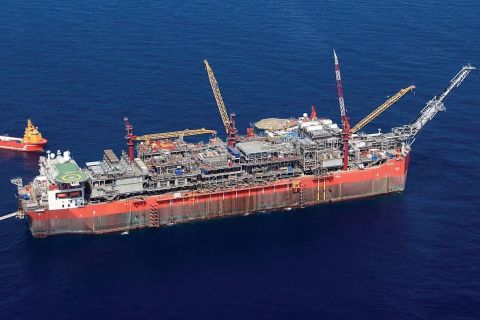Presented by:

This article appears in the E&P newsletter. Subscribe to the E&P newsletter here.
Less exploration, more optimization: the global energy transition is driving fundamental changes in the oil and gas industry. Not least among those is the strategic move away from potential new developments and a much greater focus on making the most of existing assets.
Ross Brackenridge, technical manager with Lloyd’s Register said as the shift gathers pace, operators may increasingly look to take ownership of one specialist area of well technology: cased-hole data analysis.
Supporting well integrity, safety and production goals, cased-hole analysis has always had a role to play in helping operators meet their core objectives—and its status as a value-adding activity can only grow in a fast-changing industry environment.
It could be said that cased-hole logging and analysis has until now been something of a poor relation to its open-hole equivalent, and that is down to a variety of influencing factors.
Open-hole logging—in effect, the process of acquiring representative reservoir data immediately after the well has been drilled and before it is cased and cemented ahead of production—conventionally took top billing when exploration and development activities were very much to the fore.
Cased-hole tools and techniques have long been available, serving to maintain oversight of the condition of the casing and cement as well as to support high-production performance through the provision and analysis of key downhole data. And they’re assuming greater prominence today in an industry increasingly defined by maturing assets.
Beyond enabling operators to monitor well integrity, expert interpretation of the logging data helps them determine well properties as they relate to production, from identification of downhole producing zones to the calculation of gas, water and oil volumes at each reservoir depth. It also serves to pinpoint production problems and subsequently support the formulation and execution of remedial actions.
Historical barriers to taking ownership
So the benefits of applying cased-hole solutions throughout the entire lifetime of the well are commonly acknowledged in the industry. Why, then, have operators often opted not to take direct responsibility for cased-hole data interpretation when they have typically done so for open-hole analysis?
There may be a variety of reasons why they’ve preferred to leave the interpretation work to the logging vendors. Cased-hole data responses can vary among vendors—unlike the open-hole equivalent, which is fairly standardized—and that in turn can present interpretation challenges for operators.
Many cased-hole data types have in the past required bespoke specialist software, with the consequent cost, resource and skills development implications for operators looking to take analysis activity in-house. This is particularly acute if working with several different suppliers operating various software packages with different outputs.
There’s also the question of where it sits within an individual organization. As a discipline, cased-hole log evaluation falls somewhere between the traditional subsurface specialisms of petrophysics, reservoir engineering and petroleum engineering. Because it’s not solely focused on asset geology and encompasses issues such as casing and cement, where does it sit?
Operators may now be actively addressing these issues as they increasingly recognize the safety, integrity and production optimization gains to be secured by pursuing the in-house route.
House rules: the benefits of assuming direct responsibility
The safety of their people and the asset, alongside their environment-related commitments are their areas of paramount concern. And, of course, they always retain formal legal responsibility for safety and environmental protection; even if they outsource services, they don’t outsource those core obligations. So given that cased-hole activities provide key information across all these matters—extending to the overarching issue of reputation protection—then taking direct ownership of them represents the logical approach. With robust guidelines in place for the management of well integrity, for example, operators may view it as right and sensible to assume full, hands-on responsibility for adhering to these.
In technical terms, bringing data analysis in-house lends itself to standardization, consistency, efficiency and the adoption of best practice across the business; it eliminates the need to reconcile analysis results across regions or multiple suppliers.
Critically, the introduction of a one-stop shop (an integrated software package) covering both open-hole and cased-hole data interpretation yields a succession of further advantages.
It streamlines software requirements and significantly empowers operator teams with more and better data that expedite insights and enhance decision-making, and it incrementally realizes cost efficiencies.
Those have been the principles behind the development of cased-hole analysis suites within the industry. They’ve certainly shaped and informed the industry as Lloyd's Register (LR) has developed and demonstrated its capabilities in international energy regions.
To use it as an example, LR's Interactive Petrophysics (IP) for Cased Hole Analytics software features a set of modules covering all key areas: cement evaluation, production logging, casing inspection and pulsed neutron analysis (which determines reservoir water saturation through the casing).
LR has invested in its cased-hole analysis proposition precisely because the company anticipates the market will increasingly turn to such solutions as operators seek to make the most of their investment in producing assets.
‘An immediate and value-adding option’
LR believes such a single-package option will more than prove its value over the coming years. It serves as an internal data hub on individual wells, supporting the development of collective team knowledge and representing a valuable asset in itself.
It grows as an in-house resource as new data are accrued, and the accumulation of multiple datasets in one place realizes more substantial and more complete insights into well performance.
Only by comparing it with cased-hole production logging data, for example, can a full understanding of open-hole interpretations be gained in areas such as permeability, saturation height and hydraulic flow.
Equally, well underperformance can only be fully investigated with access to both open-hole formation evaluation and cased-hole production logging, as the issue may well be associated with the formation and/or well completion.
Its in-house status facilitates further interrogation of the base data or resulting analysis at any time to deliver new insights. With 24/7 operator access to analytics capabilities, it offers a faster route to interpretation outcomes, which underpin operational decisions.
Commercially, LR can anticipate that cased-hole data analysis will become a more costly line item to source from third parties because of the growing industry demand for specialist well integrity and production optimization support. Operators can look to secure savings in the longer term with their own internal software package and associated skills.
There is also a wider benefit for operators and personnel already working to advance the energy transition agenda or planning to do so: cased-hole software and the technical skills that go with it are certainly transferable to new, alternative subsurface areas such as carbon capture utilization and storage.
In the meantime, in the maturing oil and gas industry, it is LR's experience that operators are exploring the potential of in-house cased-hole data as an immediate and value-adding option as they look to maximize economic recovery—safely and efficiently—ahead of ultimate abandonment.
IP in action

Situation: An oil-producing well suddenly begins to produce a lot of water. A quick diagnosis is required to ascertain the source of the water and whether it can be shut off.
At first glance: The production log interpretation suggests that the water is entering the borehole at the deepest perforated zone while the temperature suggests movement of fluids below that bottom perforation.
A deeper review: The cement bond log data identifies a potential channel in the cement. From accompanying pulsed neutron data—of which key inputs include clay volume and porosity from open-hole petrophysical analysis—it is confirmed that the lowest perforated zone is still oil-bearing and that the water source is indeed below the perforated zone and is traveling through the channel in the cement.
A holistic approach to data: If each of the cased-hole and open-hole datasets had been interpreted at different times in different software packages by different analysts, the issue may not have been correctly diagnosed.
By using a single software package such as Lloyd’s Register’s IP, interpretations can be made simultaneously by the same person, creating much more comprehensive insights to support correct diagnosis. Without the insights gained from interpreting the variety of cased-hole datasets together and doing so alongside the available open-hole data, it would have been easy to assume the lowest perforated zone was the source of the water, leading to an ill-advised decision to shut off an oil-bearing zone, with the potential for dire commercial consequences.
The above represents just one of many scenarios where a holistic approach can deliver direct gains, not just in commercial terms but also in the safety sphere by helping operators sidestep potentially serious hazard risks.
Recommended Reading
E&P Highlights: March 15, 2024
2024-03-15 - Here’s a roundup of the latest E&P headlines, including a new discovery and offshore contract awards.
Less Heisenberg Uncertainty with Appraisal Wells
2024-03-21 - Equinor proves Heisenberg in the North Sea holds 25 MMboe to 56 MMboe, and studies are underway for a potential fast-track tieback development.
E&P Highlights: April 15, 2024
2024-04-15 - Here’s a roundup of the latest E&P headlines, including an ultra-deepwater discovery and new contract awards.
Remotely Controlled Well Completion Carried Out at SNEPCo’s Bonga Field
2024-02-27 - Optime Subsea, which supplied the operation’s remotely operated controls system, says its technology reduces equipment from transportation lists and reduces operation time.
E&P Highlights: April 22, 2024
2024-04-22 - Here’s a roundup of the latest E&P headlines, including a standardization MoU and new contract awards.





